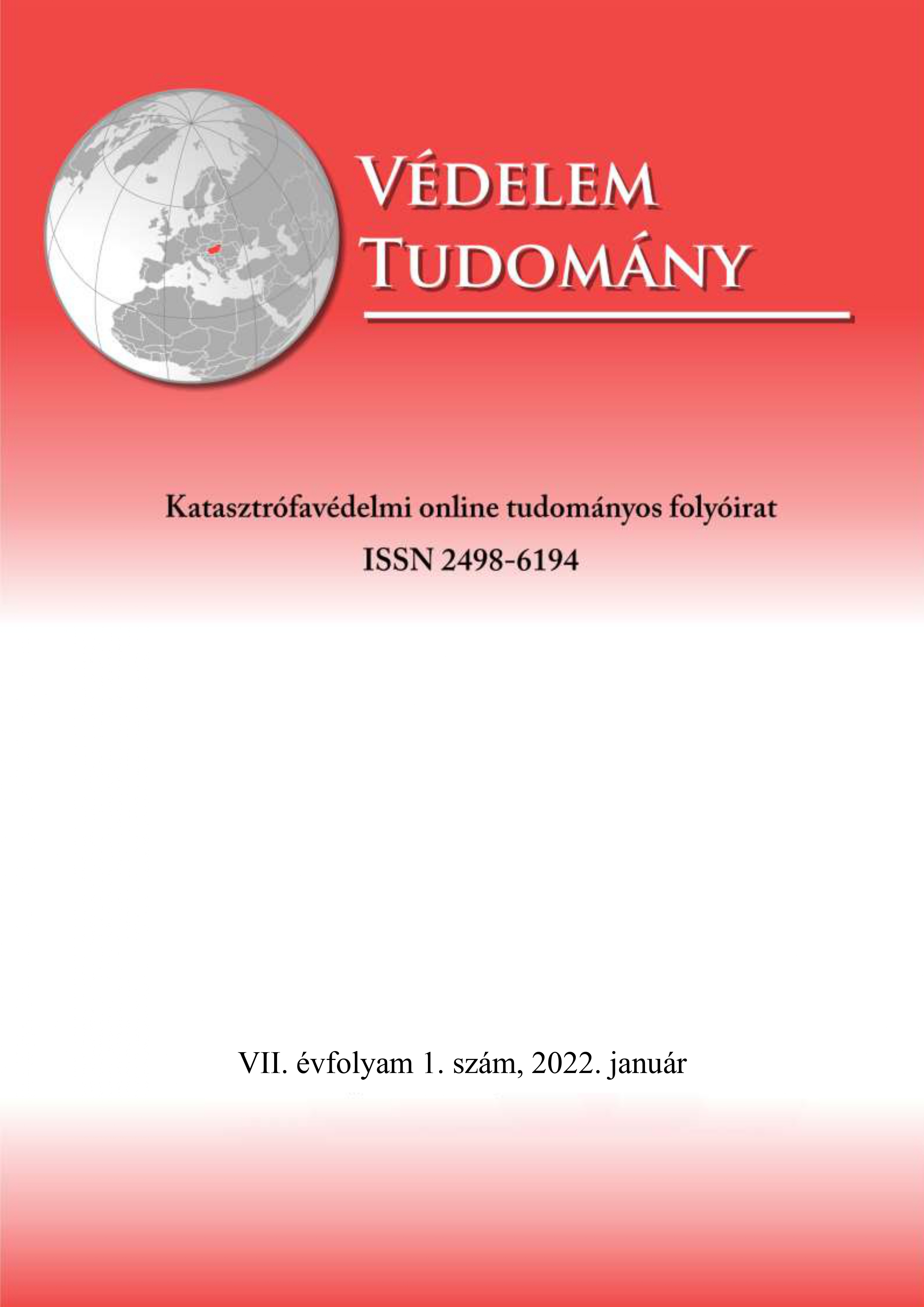Analysis of the technical and technological background of the disaster management authority system, and examination of the possibilities for further developement
Abstract
The security of a well-functioning country requires a public administration and a defense management system. The author tries to present the operation of the disaster management organization system developed in today's Hungary from the aspect of official activity, paying special attention to the examination of the "smart" tools improving the efficiency of public administration, and to prove that the can significantly increase the use of "smart" tools and technologies, thus contributing to the prevention of damage, disaster risk and subsequent disaster. The author has demonstrated, based on the research methods used, that, due to the problems described, the increasing number of checks and the evolving information society
expectations require us to assist the authorities in disaster management with smart tools and technologies to ensure safety, even higher.
References
LAKATOS Bence, TEKNŐS László (2019): Az „új” eljárási törvény eddigi, valamint a jövőben hatályosuló szankció törvény várható hatása a hivatásos katasztrófavédelmi szervek hatósági tevékenységére. Védelem Tudomány, IV. évf. 4. sz. 167-180. ISSN 2498-6194
ÁRVA Zsuzsanna, BALÁZS István, BARTA Attila, PRIBULA László, VESZPRÉMI Bernadett (2017): Közigazgatási Eljárások, Debreceni Egyetemi Kiadó, Debrecen, 26. o., ISBN 978-963-318-683-1
LAKATOS Bence (2021): Investigation of Smart Tools in Order to Improve the Effectiveness of the Administration of Disaster Management, BELÜGYI SZEMLE: A BELÜGYMINISZTÉRIUM SZAKMAI TUDOMÁNYOS FOLYÓIRATA (2010-) 69: pp. 142-157., 16 p.
MUHORAY Árpád (2017): A polgári védelem helye a modern katasztrófavédelemben, Hadmérnök, XII. Évfolyam 2. sz., 198. o.
KÁTAI-URBÁN Lajos (2015): Veszélyes üzemekkel kapcsolatos iparbiztonsági jogintézmény és eszközrendszer fejlesztése Magyarországon, Nemzeti Közszolgálati Egyetem, Budapest, 27. o. ISBN 9786155057526
VASS Gyula (2017): Industrial Safety Training in Disaster Management Higher Education In Hungary, Pozhary i Chrezvychajnye Situacii: Predotvrashenie Likvidacia 8: 2017. (2) pp. 80-84.
KÁTAI-URBÁN Lajos (2014): Establisment and Operation of the System for Industrial Safety within the Hungarian Disaster Management, ECOTERRA: JOURNAL OF ENVIRONMENTAL RESEARCH AND PROTECTION 11: (2) pp. 27-45.
Védelem Tudomány – VII. évfolyam, 1. szám, 2022. 1. hó 121
TEKNŐS László (2020): Az éghajlatváltozás és a rendkívüli időjárás hatásaiból adódó katasztrófavédelmi feladatok kockázatalapú megközelítése. Budapest, Magyarország: Nemzeti Közszolgálati Egyetem Közigazgatási Továbbképzési Intézet, 76 p.
MÓGOR Judit (2017): A katasztrófavédelem hatósági szakterületeinek tevékenysége című 2017. március 21. napján megtartott előadásából
P. SANGMIN, P. H. SOUNG, P. W. LEE Design and Implementation of a Smart IoT Based Building and Town Disaster Management System in Smart City Infrastructure, Applied Sciences (ISSN 2076-3417; CODEN: ASPCC7), Appl. Sci. 2018, 8, 2239
BUDAI Balázs (2014): Az e-közigazgatás elmélete (második, átdolgozott kiadás), Akadémiai, Budapest
NEMESLAKI András (2018): A magyar közigazgatás digitális transzformációjának jelentősége a vezetéstudományban: beköszöntő a tematikus számhoz, Vezetéstudomány, 2018, Budapest, 2-5. DOI https://doi.org /10.14267/VEZTUD., Letöltve: 2020.01.01.




